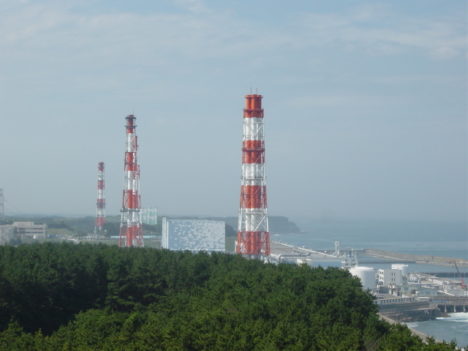A nuclear reactor in tsunami crippled Fukushima prefecture is suspected of having entered meltdown, and radioactive material has been released into the atmosphere during the incident.
After the quake caused the Fukushima I Nuclear Power Plant’s Reactor #1 to automatically shut down as it was designed to, the emergency core cooling system apparently failed to engage as it not only lost main power, but also lost its backup diesel generator power due to the tsunami’s effects.
With no cooling possible and reactor temperature and pressure rising, Japan’s Nuclear and Industrial Safety Agency announced they suspected a reactor meltdown was in progress, and confirmed that radioactive material had already been released into the atmosphere during the incident.
They have reportedly since managed to begin lowering reactor pressure and bring the situation under control, though at the expense of further leakage of radioactive material.
People living within a 10km radius of the plant, some 50,000 in all, have been evacuated or put on evacuation standby, whilst army units have arrived at the plant to assist in controlling the reactor.
Japan’s nuclear plants provide a third of the nation’s electricity and are designed to be earthquake proof; their safety record has generally been good (although several scandals relating to fraudulent or lax inspection have helped call this into question), but after this incident it is likely operators will be facing some difficult questions.
Not least of which is the wisdom of operating a nuclear reactor on the literal edge of sea in an earthquake hotspot, and with a backup power supply which is evidently none too waterproof:
The event has already been likened to America’s 1979 Three Mile Island accident, in which a meltdown caused by poor design and a series of unlikely failures in combination gave rise to a small amount of radioactive leakage and a great deal of media panic.
Meanwhile, eastern Japan’s power grid is at breaking point – severely hit areas remain without power, but due to the disruption to power generation a major shortfall is anticipated, and the power company responsible is considering instituting a program of rolling 3 hour blackouts to compensate, Japan’s first.









Hopefully more otakus died than other civilians. 😉
trolling aside,
The funny thing is that the comments on Sankaku seem to be the most neutral and unbiased I’ve read on any news site…
The rest seem to be in a deadlock of “THE WORLD IS ENDING” and “STFU Greenpeace-Zombies!”
maybe our heads are too full of moé to be taken in by eco-religions. f(^^;
I want to say that the earthquake event surprised and shocked me. A week ago I made a comment that Japan was approaching 2012 apocalypse faster than anyone else with all the political turmoil. Now seeing the earthquake, somehow I feel responsible and guilty. As in Yuuko from xxxHolic said, “Words contain power”. Scary thing.
Stay strong Japan! Stay strong! You guys have been through hellish earthquakes before! Hmm..time to give donations to help out those in need in Japan.
Usually I don’t care, but for this kind of coverage, you should really post your sources (Japanese or not).
They are pretty stupid to build nuclear plant next to the coast where this country gets hit by raging wave or tsunami every year. Even if the reason to have it there because of the cool water from the sea…..it is Classified AS High Risk because of the tsunami and the probability to leak the radioactive material to the sea and spread to nearby countries or even to their own nearby island.